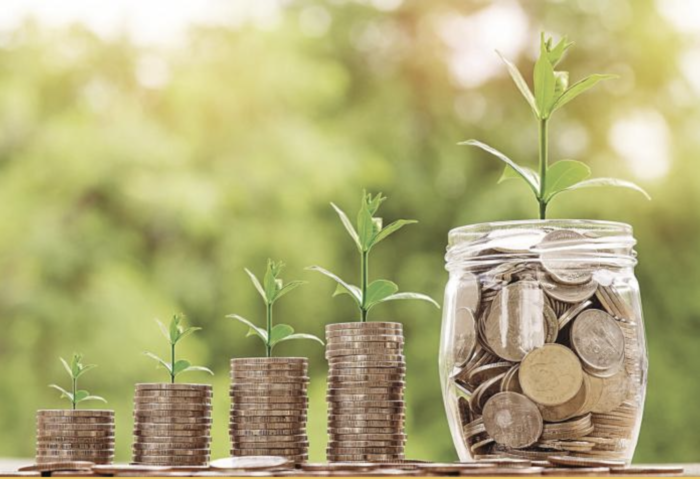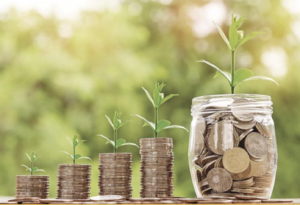2,219 entrepreneurs have benefited from the support fund for the birth, growth and consolidation of small and medium-sized enterprises. Economists ask for an ‘objective’ measurement of the criteria and results of the program that gives entrepreneurs up to $2,000 non-refundable
From January to June 2022, the Micro, Small and Medium Enterprise Authority (Ampyme) disbursed approximately $4.2 million, as seed capital, the “Mid-year review report corresponding to the first half of the year 2021-2022”, published by the Budget Directorate of the Ministry of Economy and Finance (MEF).
The resources were distributed among 2,219 entrepreneurs, according to the “business plan” of each of the small entrepreneurs benefited with this support tool for the birth, growth and consolidation of small and medium-sized enterprises.
In 2021, $6.3 million were delivered, through seed capital, with 3,243 entrepreneurs benefited; and for the year 2020, $926,852 were distributed among 494 beneficiaries, most
Law No. 72 of November 9, 2009, is a non-refundable competitive fund, of up to $2,000.00, intended to support new entrepreneurs and entrepreneurs of microenterprises, in urban, rural and indigenous areas, as long as they comply with the training and supervision that Ampyme will give them.
Entrepreneurship, a catalyst to get out of poverty
. Entrepreneurship a small business is seen by experts as a According to figures from the World Bank (WB), 3,082 million people in the world live on less than $4 a day, and Panama is no exception.
77% of entrepreneurs who are granted credit are vulnerable (with per capita surpluses below the national poverty line), 60% are women, 46% are at the lowest level of education (at the very primary level) and 33% live in rural environments.
77% of those who get out of poverty only do it through entrepreneurship,” said the director of Ampyme, Óscar Ramos Jirón, recently, highlighting that with seed capital, for example, 70% of entrepreneurs have a turnover of around $500 per month, which “re keeps them vulnerable, but automatically takes them out of poverty.”
Ramos said that as an entity they strive to how, with the accompaniment of a training and the creation of a business plan, which they are receiving through Ampyme and all the entities that are part of the national development system, they can take these ventures “a step further.”
Informality
For the labor and business expert René Quevedo, the injection of seed capital reported by the MEF “is relevant”, given the growing prominence of informal employment and companies with less than 20 workers in the country’s labor structure, which went from 52% to 59% (+7%) of the labor force in the last 10 years (2012-2022).
In certain sectors, according to Quevedo, trends were more marked, such as hotels and restaurants, where informals and SME workers went from 59% to 86% of all jobs in the sector, +27%; industry (61% to 85%, +24%), logistics (58% to 77%, +19%), commerce (56% to 68%, +12%) and construction (61% to 72%, +1
These five sectors represent 57% of private jobs and employ two out of three workers under 12 years of age. These figures reiterate the labor impact of entrepreneurs and micro, small and medium-sized enterprises (SMEs), which have been, are and will continue to be the engine of job creation in Panama,” said Quevedo.
The MSME sector in Panama, according to 2019 figures, has 51,708 companies that represent more than 72% of the business fleet, but with the pandemic many are in informal
The technology and the amount of growth of unemployment and the economic impact that all the economies of the world have had through the pandemic, have generated an increase in the informality not only of entrepreneurship but of microenterprise as well,” Ramos said.
Use of capital:
Until before August 2020, the “non-refundable” seed capital fund was up to $1,000.00, but through Law No
The resources allocated through the program may be used for the purchase of fixed assets, raw materials and inputs contemplated in the “business plan” previously approved by the evaluation committee.
They will be able to access the resources of the Seed Capital Fund, according to Ampyme, adult Panamanians, interested in starting and/or strengthening a business project in any region of the country and belonging to one of the
and another way to create or identify business opportunities.”
While the economic subsistence unit is described as the “natural person, whose income is scarce and only allows with difficulty, his subsistence and/or that of his family”; and the economic unit of accumulation to the “natural person who manages to cover his production costs without generating surpluses.”
Here, “the only thing that worries me is when the term entrepreneurship is used. What do you call entrepreneurship? To start a business? What type of business? If you have a business plan and if that type of elements are part of the criteria to grant you $1,000 or $2,000, which although it seems a very small figure, when there are 2,000 people (beneficiaries), it is $4.2 million,” questioned economist Víctor Cruz.
According to the Royal Spanish Academy, undertaking means “to undertake and start a work, business, The National Entrepreneurship Policy: Panama Emprende y Crece 2017-2022, recognizes as an entrepreneur “a person who seeks change, responds to it and has the determination to look for new paths and ways of doing things with an unequivocal decision to carry out actions that are difficult, that represent some risk, but that have all the importance and relevance for society,” explains the “Quick Guide for entrepreneurs”
that “generally the government does not have elements to measure, what is the return of that type of ‘investment’?, in quotation marks, or what are the results of the support of that program? What follow-up do you give to those small businesses? and it simply grants resources.”
He insisted that, in his opinion, it would be important for the government to have an “objective” measurement of the performance that money that is being “invested” is giving, at this time, when there are still very strong consequences due to the pandemic …”.
Where does that type of business, that type of entrepreneurship point? It’s not that I’m against that, but at least there are institutions like Senacyt (National Secretariat of Science and Technology) that I think has a business incubator and is something much more formal. Aren’t they the same businesses that you usually see out there, when someone with their own resources or a loan, or the family puts a sale of what do I know?” Cruz reflected.
The economist “concerns when the government decides to grant resources, because that is not their money, it is money of all the people who in one way or another we pay taxes, resources,
Many of the entrepreneurs, their first contact with a financial institution is made through these programs. The seed capital program works hand in hand with the Savings Bank. “Ampyme never reaches a dollar. That money passes from the Savings Bank to the supplier presented by the entrepreneur, which allows him to create a banking relationship, which is part of that path towards the formalization of a company,” said the director of Ampyme, an entity that is in charge of coordinating the business development system and committed to entrepreneurship.

